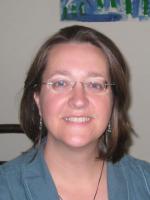
Active faulting in Southern California
My students and I have developed mechanical models of the active faults in Southern California that include all sorts of three-dimensional complexity along the restraining bend at the San Bernardino Mountains and other regions. With the models, we examine how the fault geometry both hinders and facilitates slip along faults. We also work with paleoseismologists, sedimentologists and geomorphologists to compare the slip rates, deposition and uplift patterns from the models with the geologic record. Our models can also simulate interseismic deformation so that we can compare the surface displacements of the model to the GPS station velocities.
Asessing Fault Evolution using Work Minimization
Faults grow in order to minimize work of the system. My students and I are exploring this hypothesis with a variety of analytical, analog and numerical approaches. Analog experiments using either a sandbox or claybox provide a wonderful opportunity to observe fault growth under known conditions. We are collaborating with sandbox modelers who record how the applied force changes during fault system evolution . In the physical modeling lab at UMass, we run claybox experiments and analyze the work budget by simulating deformation within numerical models. We calculate the Wfric (frictional heating), Wgrav (work of uplift against gravity), Wint (internal mechanical work), Wseis (seismic radiated energy), Wprop (work of fault propagation) and the Wtot (tectonic work). The tradeoff among these work terms as faults evolve reveals insights into the mechanisms of fault growth and abandonment.
We've been learning a lot about fault growth through the numerical models and analog experiments but we have a lot more work to do. Future projects are likely to involve more claybox modeling. Our recent investigations into clay rheology show that wet kaolin is an excellent analog for Earth materials. The ease of fault reactivation in clay makes it a very important comparison to sandbox models. All projects involve some degre of mechanica modeling as this is a strength of the geomechanics group.
Field work opportunities. While none of our current projects centers around field data collection, all students in the geomechanics group have opportunities to assist in field projects with various colleauges.